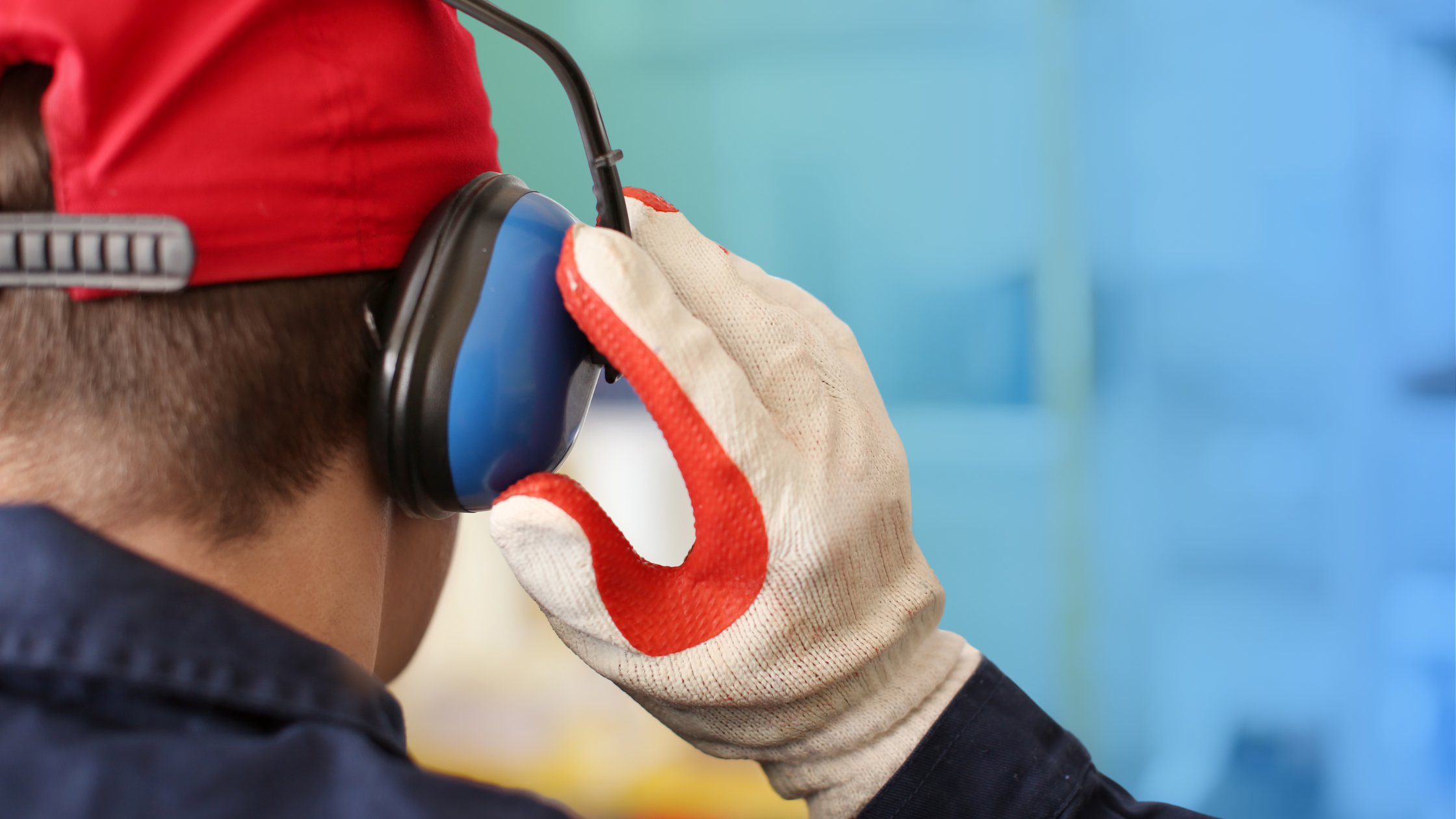The end of October always brings Halloween and the unofficial start of the holiday season. But the entire month of October is also Protect Your Hearing Month. This isn’t just an occasion for individuals to take stock of their hearing and look for potential signs or causes of hearing loss. It’s certainly not a month solely for older people who are more prone to hearing loss than others.
Part of the purpose of Protect Your Hearing Month is for employers to identify what they’re doing to help the health and safety of employees as it relates to hearing loss. While loud noises are more common in certain work environments, every employer needs to be aware of the potential risks that exist in the workplace that could impact the hearing of workers and what can be done to mitigate those risks. Let’s take a look at some of the things companies should be doing during Protect Your Hearing Month to assess and prevent some of the health and safety risks that could impact the hearing health of employees.
The Scope
First of all, it’s important to understand the scope of hearing loss and how serious it is. In the U.S., roughly 15% of adults over the age of 18 have some level of hearing difficulty. This obviously has a negative impact on their quality of life while also being related to other health issues. It can make it more difficult to work and maintain a steady job while also impacting their safety and the safety of others both at work and at home. In fact, the workplace is one of the leading causes of hearing loss. Nearly 25% of people who experience hearing loss can attribute that hearing loss at least partially to the workplace. This is a big reason why companies need to take the hazards that can contribute to hearing loss seriously.
The Causes
The most obvious cause of hearing loss in the workplace is exposure to excessive amounts of noise. If a workplace consistently has over 70 decibels of noise, anyone with prolonged exposure to that will be vulnerable to hearing loss. Short-term exposure to decibels of 120 or higher can also have the same effect on a person’s hearing. Likewise, noise combined with vibration can also cause damage to someone’s hearing if exposed for extended periods of time.
However, loud noises aren’t the only cause of hearing loss. Workplaces that have chemicals present can also make employees vulnerable to hearing loss. There is a class of chemicals called ototoxicants that are common in solvents, pesticides, and even medicines that can contribute to hearing loss. On top of that, head injuries can also be the cause of hearing loss. In certain work environments, this can be a potential safety risk for companies to monitor closely.
The Industries
Employees in certain industries will be more at risk of the types of hazards that lead to hearing loss than others. Manufacturing, construction, and warehouse settings all tend to be noisy environments. Many companies in these industries could work with hazardous chemicals or put employees at higher risk of head injuries than in traditional office settings. In indoor work settings where loud noises have no outlet, there is always the possibility that decibel levels can climb to dangerous levels, even if those environments don’t seem particularly noisy at all times. Of course, even employees who work outside on construction sites or other loud settings should be concerned about the potential for damage to their hearing.
The Consequences
While hearing loss sounds self-explanatory, it can also be a broad term with a variety of symptoms. For instance, employees who work in environments with loud noises can sometimes experience hearing loss that’s temporary. Other times, hearing loss can become permanent. It’s also possible to experience symptoms like tinnitus, which is a ringing in the ear that can impact someone’s ability to hear clearly and focus on the task at hand. Even fatigue can be considered a symptom of a work environment with dangerous levels of noise.
Any of these symptoms can have consequences for someone while working. A person may not hear the instructions or warnings from somebody else. They might not be aware of their surroundings because they can’t hear everything happening around them. In many work environments, this can significantly impair someone’s ability to work safely, putting the safety of themselves and possibly others at risk. Needless to say, this can increase the chances of a workplace accident, putting companies at increased risk of fines, workers’ compensation claims, and several other costs associated with a poor safety record.
Hearing Conservation Program
The least that any company can do is create a hearing conservation program to help monitor noise levels and protect employees from the consequences of loud work environments. Such a program will include noise monitoring to help a business gain an understanding of how loud different work environments are and how exposed employees are to dangerous levels of noise.
Based on noise monitoring levels, employers will know if noise can be considered a health risk for workers. This will help determine if any mitigation techniques are required, keeping in mind that not all employees may be at the same level of risk. Likewise, employees will likely need to be educated and trained on the dangers of loud noises in the workplace and the potential for hearing loss.
It’s also a good idea for a hearing conservation program to offer testing to employees to check if their hearing is impaired in any way and if it’s potentially deteriorating year after year. Doing this not only protects workers but can also provide data on whether or not noise levels in the workplace are a serious hazard or not.

Monitoring Noise Levels
As mentioned, a hearing conservation program must include measuring and monitoring noise levels. This can be a challenge because unless an employee is exposed to the same level of noise throughout the day, it can be hard to determine with accuracy their level of exposure. Other companies take a less scientific approach and make a determination based on instinct if an area sounds too loud or not.
However, there is an app developed by the National Institute of Occupational Safety and Health (NIOSH) available on smartphones that can be used to detect dangerous levels of noise. The NIOSH Sound Level Meter app is one of the newest ways to measure whether noise levels in the workplace are hazardous for workers or not. It’s also possible for employees to wear a dosimeter during their shifts to help track changes in noise levels around them while they work. Of course, this assumes that noise levels remain consistent from one day to the next.
Either way, it’s critical for employers to have some method of monitoring noise levels. This is vital to figuring out the level of risk employees face when it comes to their hearing. Keep in mind that just like the hearing of employees should be tested regularly, noise levels should be tested, tracked, and monitored regularly to detect potential changes to the level of risk in the workplace.
Hearing Loss Controls
No matter how serious the noise levels might be, every employer should consider instituting controls that can reduce the risk of hearing loss among employees. Depending on the specific environment and the level of risk, there are several potential controls that should be considered. If nothing else, companies should attempt to give individual workers frequent breaks in a quiet area so that they aren’t around loud noises for the full duration of their shift.
Another easy solution to a loud environment is providing personal protective equipment (PPE) for employees to help mitigate the problem. Common PPE in loud work environments include earplugs, earmuffs, and headphones. Companies need to provide these options for employees and should encourage workers in loud environments to wear this type of PPE at all times.
Just keep in mind that while PPE is the last line of defense, it shouldn’t be considered a solution on its own. Businesses also need to consider engineering controls that can reduce noise levels without interfering with productivity. If possible, companies might be able to replace tools and machinery with similar options that make less noise. Keeping up with maintenance on equipment can also help to reduce the noise they make.
There could also be administrative steps to reduce noise in the workplace. This can include isolating the noisiest machines from a majority of workers to protect as many people as possible from the effects of noise pollution. Limiting the amount of time employees have to be around the loudest areas can also help. Placing noise barriers is also an option, although it’s not always the most effective control method.
When it comes to understanding the danger of loud noises and potential mitigation techniques, the safety management software from EHS Insight can be helpful. This system is designed to track workplace hazards and help companies find solutions that can better protect employees. Keep in mind that OSHA has certain standards that must be met for all workplace hazards, including loud noises that can lead to hearing loss. This makes EHS Insight’s safety monitoring software a useful tool that can protect employees and prevent regulatory issues and punishments.

